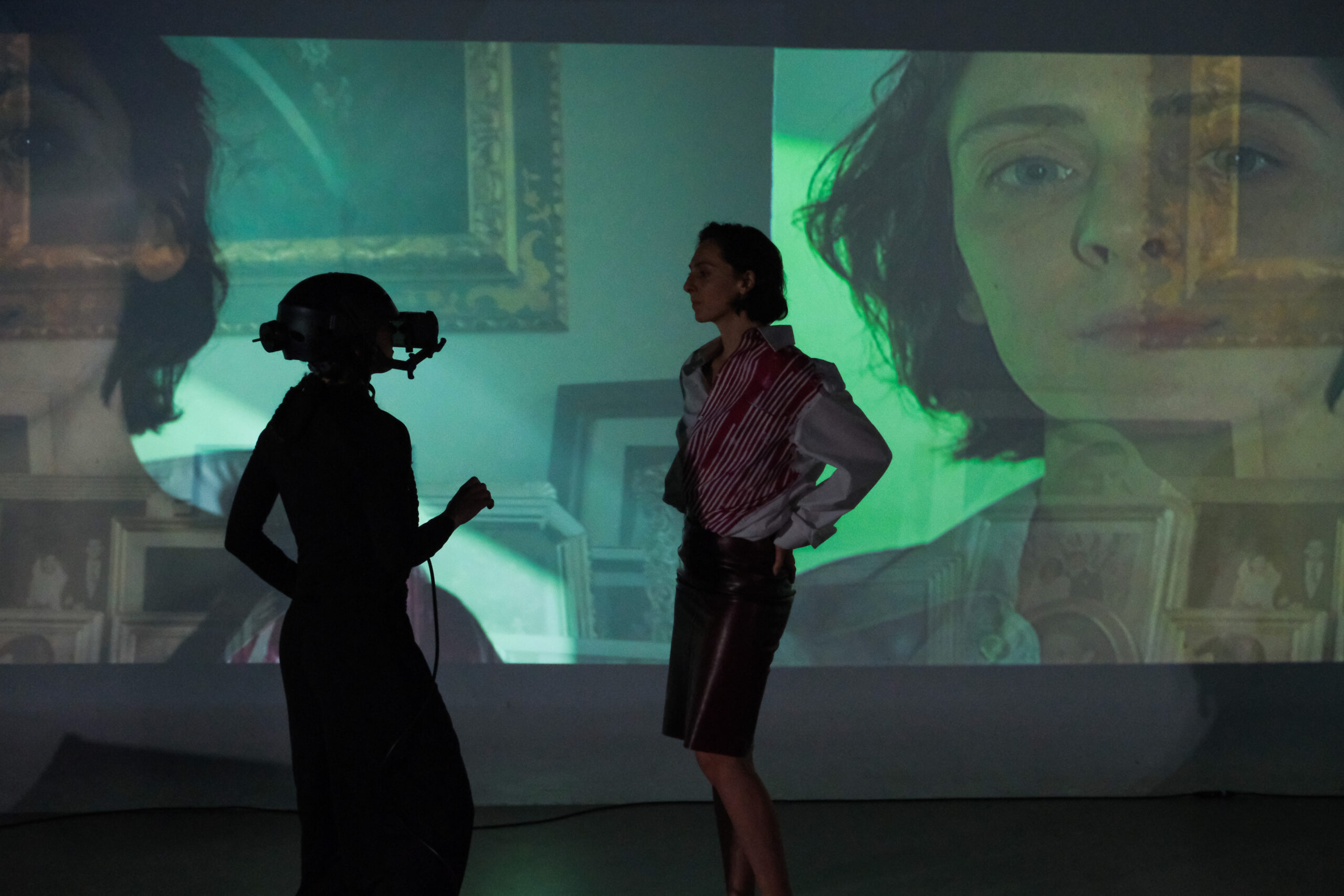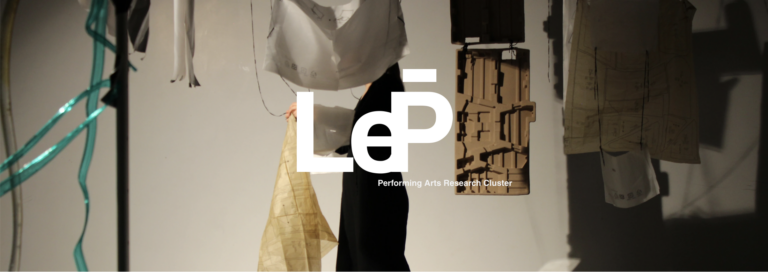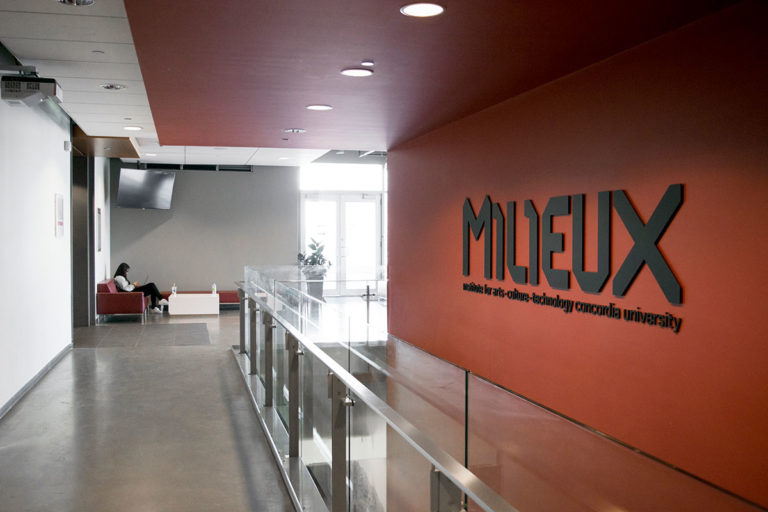Exploring the realm of performance research-creation, LePARC’s annual showcase returns once more, inviting both artists and scholars to engage with the culmination of a two-week residency. Coordinated by Tricia Enns and curated by Margaret Lapp and Seyed Hamidreza Hosseini, with support from technical coordinator Malte Leander and curatorial adviser Lília Mestre, this year’s event, “The Tentacular Inquiry of Performance“, offers a thoughtful examination of the convergence of research creation and performance. Drawing together artist scholars from the LePARC community and collaborators from the HTMLles festival, the exhibition embodies a spirit of “cross-pollination,” fostering an environment where diverse perspectives intersect and enrich one another. At its core lies a fundamental question: “What is performative inquiry?” With a focus on introspection and exploration, LePARC’s Embodied Interventions provide a platform for deeper contemplation and dialogue, inviting attendees to ponder the complexities of artistic expression and the significance of performative inquiry in contemporary discourse.

Day One:
Our first stop begins on the 4th floor of the EV building in the small black box theatre. Awaiting us inside is artist Diego López Francia, singing an R.E.M. song along with a small Yoda figurine and another piece of Star Wars memorabilia placed on a small table. Behind López Francia is the beginnings of a slideshow. Titled “Find the River,” this testimonial play follows the non-linear tracings of a man weaving through the beginnings, endings, returnings, and reconciliations of his family lineage. Undressing the layers and complexities of his family history, López Francia merges both philosophy and storytelling to navigate his place inside a larger narrative, performing a kind of autotheory. Moving between song, anecdotes, memories, media influences, and the love of our animal kin, we are invited to look closer at his own narrative journey.
Next on our adventure is a performative exploration by artists Las Sabinas in “We once found ourselves in Barcelona.” Waiting for us in the Video Performance Studio (VPS) is a green screen on the right wall of the room with a video pointing towards it. Wrapped around the back half of the left wall and corner is a projected image of a Renaissance painting (inspired by the painting “El rapto de las sabinas”) and is filled with a multitude of small duets – moving images of Las Sabinas that gesture and share a muted conversation. We are advised before the performance begins that this is a “live recording” or “Episode 9.” What emerges next is a mixture of gestures, critical thought, art history, storytelling, and a large amount of straw; all projected directly to join the other, smaller versions of Las Sabinas. After the work has ended, Las Sabinas invites us to enter the work, to help clean some of the straw, and to appear ourselves in the ongoing and slowly accumulating dialogue.
Back in the Performance Lab are two TV screens showcasing a site-specific and durational video of two dancers who dance gently in a parking lot. Widely projected on the back wall is a time-lapse of the Japanese Gardens at the Montreal Botanical Gardens interspersed with a dancer in a green suit who moves in front of a green screen. The dancer moves slowly and sensually, fading in and out of the garden, seeming to embody the garden itself. These video works are Allison Peacock’s “Skeleton of Stones” & “Future Garden” and are joined by a live performance by dancer Mairead Filgate entitled “The Gardener.” Inspired by a transposition of a gardener’s routine into modern dance vocabulary, we follow Filgate’s rhythm as they gaze upwards and to the left, producing intricate and dedicated angled postures and gestures that form a meditative and thoughtful ritual.
Stepping again into the VPS, we are met with an array of cameras and technical gear. Awaiting us is a woman writing at a desk and a person dressed all in black who has a camera attached to a large black helmet that obscures her view. A tangle of black cords follows her around, as do the camera and audio technicians who project their capturings of the performers back into the space. Monologues, movement, and overlaid images fill the space, producing a kind of emergent alternate reality. Later explained to us as the entanglement of Kayla Jeanson and Cristina Planas’ work, “Beh0lder x DNV” could best be described as live filmmaking, mixing memoir, the personal, with live and wearable technical recordings. Supported by the HTMLles Festival, Jeanson and Planas assure us there is more to come.
We next make our way to the heart of a dimly lit theater where two protagonists are weaving between the solitary introspection of monologues and the dynamic exchange of dialogue. Amidst the ethereal ambiance, a psychedelic cello resonates, its haunting sounds intertwining with an eerie choir of bird people stationed at the back. Through distorted mics, these bird people repeat phrases from our two protagonists, casting a surreal spell over the audience. Inspired by an Icelandic folktale, the narrative unfolds like a mystical journey, punctuated by the donning of masks and soul-stirring singing. Debora Allen’s Lullaby – the play! has created an otherworldly experience that transcends the boundaries of reality.
Day Two:
We begin today in the VPS space where Kristen Lewis, Hannah Schallert, and Patricia Machado sit gracefully on the floor, eating, admiring, and sharing casual conversation about the charcuterie board before them. Beginning as a small picnic, “Frequency for Nausea” follows the somatic and sonic articulations of the gut. Using a stethoscope turned contact mic, the performers record, loop, and alter their digestive sounds, allowing the soundscape to instigate their dancing, producing beautiful movements that attend to an ongoing, textural, and shared body.
Our final performance of the weekend is by Eija Loponen-Stephenson & Nathan Ferguson. Described as a “mini-symposium,” desk lights turn on and off as Loponen-Stephenson & Ferguson narrate their shared email thread that had developed over the 2-week residency period. Followed along by a slideshow, we are woven into a conversation of city-body dynamics: wearable trash suits and maps, all interspersed with various theoretical murmurings. “City Caligraphics” moves first from documentation into performance back to documentation, looking at each crack and crevice their process produces.
Left with the question, “what is performative inquiry?” I can only say that it seems to take on many shapes, temporalities, and aesthetics. Continuously moving across and between video, movement, monologue, and even email, what prevails is a desire to intervene with one’s entire embodied self.
– Text by Heather Anderson / Photo credits: Kristina Hilliard



